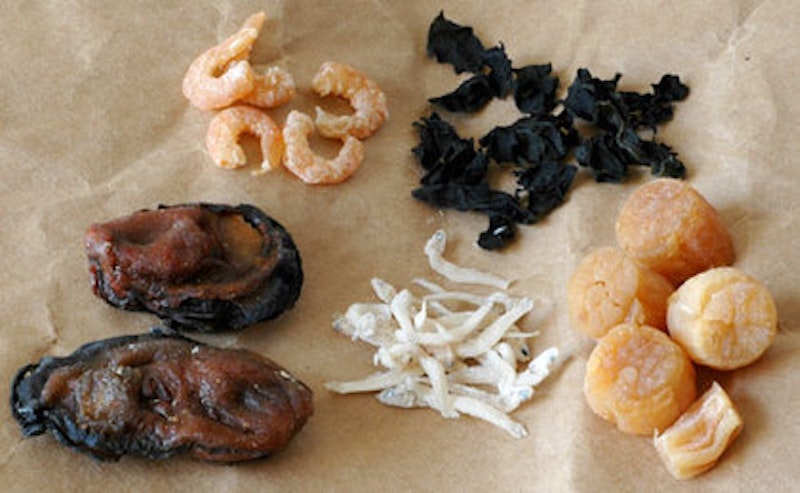"Long before "umami"—recognized as the fifth taste after sweet, sour, salty, and bitter—became a culinary buzzword, Chinese cooks identified the presence of umami's savory "mouthfeel" in lovingly tended, double-boiled soups and slow-simmered broths. The resulting full, rounded flavor of the stocks was attributed to their base of poultry, pork, or fish bones and assorted meat scraps—a flavor that that we now know to be chock full of naturally occurring glutamates. Today, it remains the home economist’s pride to be able to coax the magnificent “meat sweetness” or umami-ness of these stocks from nothing more than humble kitchen throwaways.
But when money is no object, the ingredients most prized for their ability to deliver the desired umami punch are the briny treasures from the sea. These commonly include dried oysters, shrimp, seaweed, scallops, and anchovies.
In terms of convenience, the ultimate weapon in the Chinese cook’s umami arsenal is a condiment known as "XO sauce." Named after XO or extra old cognac, the sauce (more like a cooked salsa, really) is made from a sautéed mix of dried seafood, Chinese ham, shallots, garlic, and chile. Though not terribly picturesque, this sauce would turn the barest subsistence meal—from instant ramen to plain white rice or even boiled potatoes—into a satisfying repast. It is the reason why almost every Chinese cook will have a bottle (or six) tucked in their larder for "emergencies."

